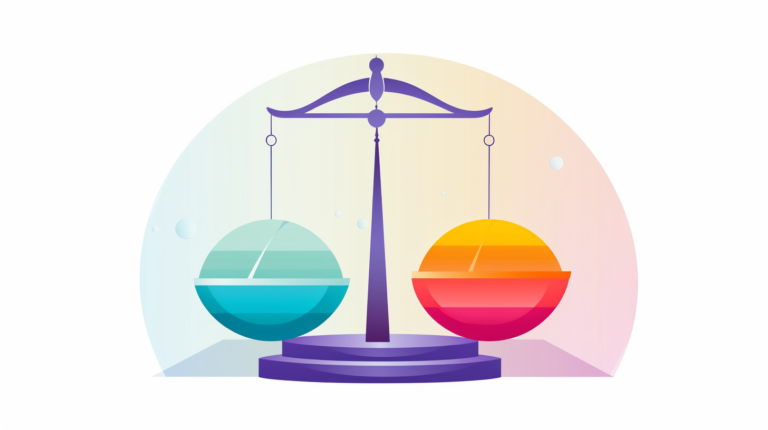What Is a Healthy Debt-to-Income Ratio for a Loan

Feeling weighed down by loan payments? Confused about how your debt-to-income (DTI) ratio impacts your chances of securing new credit? Trust me, I know the struggle; those percentages and ratios can be a real mental workout.
Did you also know that an optimal DTI ratio for a loan generally falls below 35%? In this article, we’re going to unravel the mystery of the DTI ratio together. We’ll discuss its importance when applying for loans and map out some strategies to help you reach or maintain healthier figures.
Ready to take charge and tame your debts? Let’s dive right in!
Key Takeaways
- The Debt-to-Income (DTI) ratio is key when applying for loans. It shows how much of your income goes to paying debts each month.
- It’s best to have a DTI ratio below 35%. This number tells lenders you’re good at handling money.
- Your DTI can be high or low. A high rate can make it hard to get new credit. A low rate helps show you are smart with money and will pay back what you owe!
- You can lower your DTI! You should pay more towards debts, not add new ones, earn more if possible, and keep track of where your money goes every month.
Understanding the Debt-to-Income (DTI) Ratio
Let’s delve deeper into understanding what the debt-to-income (DTI) ratio is – it’s a crucial financial measure that lenders, such as LendingTree or Wells Fargo Corporation, utilize to assess your borrowing risk.
It’s based on comparing your monthly debt payments to your gross monthly income and plays an essential role in determining whether you qualify for lending products like mortgages, auto loans or business loans.
In this section, we will clarify key points about DTI ratio and how it impacts your creditworthiness in the eyes of financial credit providers.
What Is the Debt-to-Income (DTI) Ratio?
The Debt-to-Income (DTI) ratio is a tool that shows how much of your money goes to paying debts each month. You get this number by dividing your monthly debts by your gross monthly income.
This means all the money you make before taxes. The lower the DTI ratio, the less of your earnings are spent on debt and the more cash you have for other things. It’s better to have a low DTI because it shows lenders that you can manage money well.
Most lenders like a DTI ratio below 35%, but it can change based on who is lending you the money.
Key Takeaways
In simple words, the debt-to-income (DTI) ratio shows how much of your money goes to pay debts each month. Banks and other loan givers use this ratio. It helps them see if you can handle more debt.
A good DTI is usually below 35%. Your gross monthly income and how much you owe make up this number. There are two parts to it: front-end and back-end ratios. The front-end part includes housing costs like rent or mortgage payments, taxes, insurance, and fees.
The back-end part has all your other debts added too.
Keeping a low DTI makes banks view you in a good way. It increases your chances of getting any type of loan, including car loans, business loans or even student loan refinance options.
If you plan on becoming a homeowner one day, the Consumer Financial Protection Bureau suggests keeping your back-end DTI under 43%.
Knowing these facts about the Debt-to-Income Ratio can help us make better choices with our spending habits.
How to Calculate Your DTI Ratio

Calculating your Debt-to-Income (DTI) ratio is a simple process, you simply divide your total monthly debt payments by your gross monthly income. This calculation gives lenders a quick snapshot of your financial obligations relative to your income and helps them assess how much more debt you can comfortably handle.
The lower this percentage is, the better it bodes for securing loans with favorable terms. It’s important to understand that this calculation includes all regularly recurring debts such as mortgage or rent, car loan, student loan payments and minimal credit card payment amongst others.
Remember: knowledge is power – accurately understanding where you stand financially empowers you in making smart decisions about borrowing money responsibly!
DTI Formula and Calculation
Let’s talk about the DTI formula and how to calculate your debt-to-income ratio. Here are the steps:
- Make a list of all your monthly debts.
- These could include student loans, auto loans, or credit card bills.
- Now, add up your total monthly income before taxes.
- This is your gross income.
- Divide your total debt by your gross income.
- This will give you a number that may be a decimal.
- To get the DTI Ratio, multiply this number by 100 to turn it into a percentage.
- Divide $1500 by $4000 which equals 0.375
- Multiply 0.375 by 100 which gives you 37.5%
Debt-to-Income Ratio Example
Let’s look at how to use the DTI ratio. Say, your total monthly bills are $2,000. This includes your rent or mortgage, car loan, and credit cards. If you make $6,000 each month before taxes and other cuts from your pay (gross income), your DTI ratio is 33%.
To get this number you divide $2,000 by $6,000. As a rule of thumb lenders like to see a DTI ratio below 35%. So in this case, most would see you as a good loan candidate.
Healthy Debt-to-Income Ratios for Loans
A healthy Debt-to-Income (DTI) ratio for loans differs based on the type of loan, but typically, a DTI of 35% or less is favourable as it indicates good financial health. In certain circumstances, lenders may still approve borrowers with ratios between 36% and 49%, however this can often lead to higher interest rates.
Ratios at 50% or more are red flags to creditors as they signify high borrowing risk; hence it’s crucial to strive for a lower DTI when considering taking out major loans.
Debt-to-income ratio of 35% or less
Having a debt-to-income ratio of 35% or less is good. Lenders like to see this low number. It tells them you manage your money well. You are not deep in debt and can pay your bills on time every month.
This makes you a safe bet for them. They will be more willing to loan you money if needed. A lower DTI also gives you room to take on new debt without trouble.
Debt-to-income ratio of 36% to 49%
Having a debt-to-income ratio between 36% and 49% means your debt is under control. Yet, some lenders may see this as too high. They might worry you can’t pay back the money. This could make it harder for you to get a loan or credit card.
To avoid this, try making more payments on your debts each month. It’s also essential not to add more debt on top of what you already owe by using high-interest rate cards or getting new loans that are not needed.
Debt-to-income ratio of 50% or more
A debt-to-income ratio of 50% or more is not good. It means you are in debt trouble. Half of your income goes to pay off debts each month. This high ratio can stop you from getting new credit chances.
It might make it hard for you to get a mortgage loan, too. You may need help with managing your debt if you have this high ratio. So, try to lower it for a better financial future!
The Impact of DTI Ratio on Mortgages
Your DTI ratio directly influences your ability to secure a mortgage. Lenders assess this financial indicator to determine if you can handle additional debt responsibly. A high DTI ratio may suggest potential default risk, leading to higher interest rates or even declined loan applications.
On the other hand, a lower DTI indicates better debt management and increases your likelihood of receiving favorable mortgage terms. Therefore, understanding and managing your DTI is crucial when planning for a home purchase or refinance scenario.
Debt-to-income ratio for mortgage

Your debt-to-income ratio plays a key role in getting a mortgage. Most lenders use this number to decide if you can handle a home loan. A ratio of 43% is the highest for most mortgages.
This means no more than 43% of your income should go towards paying debts each month. This includes the mortgage, car loans, and credit cards. If your ratio is lower than 36%, it’s even better! Lenders like low ratios as they show you can manage money well.
How to lower your DTI ratio for a mortgage
To lower your debt-to-income ratio for a home loan, you can follow these steps:
- Firstly, pay more money towards your present debts. This reduces the total amount of debt you owe.
- Secondly, try not to add new debt. Ignore that urge to open a new credit card or take out another loan.
- Thirdly, try to earn more money. A part-time job or freelance work can help boost your income.
- Fourthly, think about making higher down payments on a house. It lowers your monthly mortgage payment.
- Lastly, work on improving your credit score or save more money. Both steps show lenders you are smart with money.
The Effects of DTI Ratio on Your Credit
Your debt-to-income ratio can significantly impact your credit. It’s a crucial component in determining your financial health and lending risk, which directly affects your creditworthiness to potential creditors and lenders.
A high DTI rate might indicate you’re burdened with too much debt compared to income, putting you at risk of missing payments or defaulting on loans. This could lead to negative remarks on your credit report, ultimately dropping your FICO score or VantageScore.
Consequently, maintaining a lower DTI ratio will paint a favorable picture of your financial management skills – increasing the chances of getting approval for future loans or credit card applications.
Can your debt-to-income ratio impact your credit?
Yes, your debt-to-income ratio can change how your credit looks. Your loan amount is picked by the lender based on this number. If you have a high debt-to-income ratio it may harm your chance to get new credit.
Lenders might think you can’t take on any more bills if they see a high ratio.
It also affects the cost of taking out new loans or lines of credit. A higher ratio might lead to paying higher interest rates and fees.for these financial goods. So, keeping a low debt-to-income ratio is good for both getting loans and not having to pay too much when you do get them.
How your debt-to-income ratio affects you
Your debt-to-income ratio talks a lot about your financial state. It tells lenders how you manage debts with the money you make. A high DTI ratio says that you owe more than what you earn and may have trouble paying back your loan.
Lenders could see this as risky.
So, it’s harder to get loans or use credit cards when your ratio is high. You might end up with higher interest rates on loans and credit cards too. On the other hand, a low ratio means less risk for lenders because it shows that you handle your money well.
This can lead to better loan terms and lower interest rates!
Ways to Lower Your Debt-to-Income Ratio
Reducing your Debt-to-Income (DTI) ratio can be an effective strategy to improve your financial health and increase your chances of securing a loan. An excellent starting point is managing your debts wisely; this might involve consolidating high-interest rate credit card balances into a lower interest loan or actively working towards paying off smaller debts faster using methods like the debt avalanche or snowball.
Secondly, consider increasing your income by seeking additional part-time work, selling unused items, or negotiating for a higher salary at your current job. Another pivotal step involves avoiding taking on new significant debt obligations that could exacerbate the DTI ratio; hence it’s wise to delay major purchases until you’ve successfully lowered your DTI ratio.
Lastly, keep in mind that patience is key – lowering your DTI ratio doesn’t happen overnight but will gradually improve as you remain consistent with these practices over time.
How to Lower a Debt-to-Income Ratio

Here are some ways to lower your debt-to-income ratio:
- Pay down your debts: Start with those that have high interest. It’s the best way to decrease your DTI ratio fast.
- Avoid new debt: Don’t take on more debts. This can help keep your DTI ratio from growing.
- Earn more money: Get a second job or side gig for extra cash.
- Use a balance transfer card: If you have high-interest credit card debt, this could save you money.
- Refinance or consolidate debts: With lower interest rates, you could lower your monthly payments.
- Make bigger payments: If possible, pay more than the minimum amount due each month.
- Prioritize paying off loans with the highest balances: These are usually student loans and mortgages.
Real-World Example of Lowering the DTI Ratio
Mark had loads of credit card debt. It was so much that he couldn’t get a loan for his dream house. Mark made a plan to cut down his debt and raise his income. He started by paying off the cards with high interest first, then moved onto the others.
This way is known as the “debt avalanche” method.
At the same time, Mark took on side jobs to earn more money each month. After a year, he decreased his debts and raised his pay check amount. With these changes, Mark lowered his DTI ratio from 50% to 35%.
Now, lenders saw him as less risky and ready for that house loan!
Conclusion
In the end, a healthy debt-to-income ratio is an important part of getting a loan. Having a low DTI shows lenders that you can handle more debt. If your DTI is high, work hard to bring it down before applying for new loans.
Always remember, everyone’s situation is unique and it’s key to find what works best for you.






